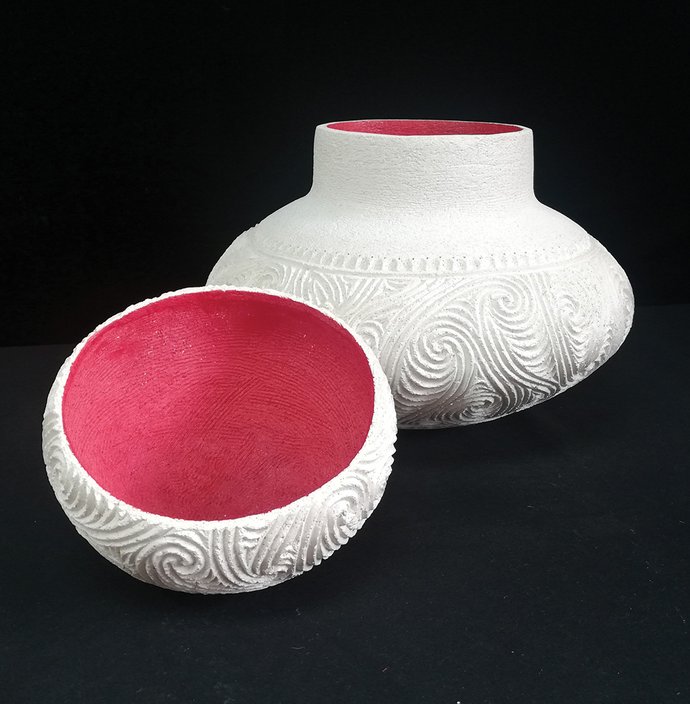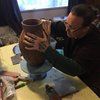He Kākano is a solo exhibition by ceramicist
Stevei Houkāmau who was born and raised in Cannons Creek Porirua. Stevei enrolled to study Tā Moko for a
bachelor of Māori Visual Arts but she also fell in love with uku (clay). The
passion she has for both art forms can be seen in her work. She explains that
she ‘started to use clay like it was skin and my carving tools are my tattoo
machine or uhi.’
There is no recorded Māori
customary tradition of working with clay in Aotearoa/New Zealand. But in the 1980s, a small group of artists formed the collective Ngā Kaihanga Uku and they started to create uku/clay artworks
based on Kaupapa Māori. This new art practice has since grown into an
established art-form and recognised creative expression for Māori. The
fact that uku comes from the earth – the earth mother Papatūānuku – provides an
ancient connection and good reason to link ceramic art with Māori culture.
Many of Stevei’s white raku clay vessels are based upon Māori ipu forms. Ipu is the word for a vessel, container or bowl. A hollow hue (gourd) was the most common traditional storage container, once it had hardened and dried with the inside seeds removed. Kakano/seeds are a symbol for potential and Stevei has themes of connections/ties to the past, present and future in her work and across the Pacific. What do your students think these vessels should contain?



